Learn to recognize the 5 diseases most common for Orlando lawns and take the right steps to protect your landscape today.
The way that you care for your lawn can have a big impact on not only its appearance but its overall health. Over-watering, under-watering, cutting grass too short, and improperly fertilizing can cause damage or unnecessary stress to your landscape, making it more susceptible to disease. Learn to recognize the following most common lawn problems and diseases in Orlando, and take the right steps to protect your landscape today.
Common Lawn Diseases in Orlando
While summertime brings to mind lush greenery and warm sunshine, for many homeowners, it is also the time where lawn diseases start to happen. With stress from sunlight, drought, and higher foot traffic, it’s no wonder your lawn is more worn out than usual during the summer months. For many homeowners in Florida, telling the difference between lawn diseases can be a bit of a challenge. We’ve outlined the most common lawn diseases in Orlando and how to prevent them, so you can take your lawn back and enjoy the rest of your summer! Check out our tips on how to prevent lawn diseases, including:
Brown Patch Fungus
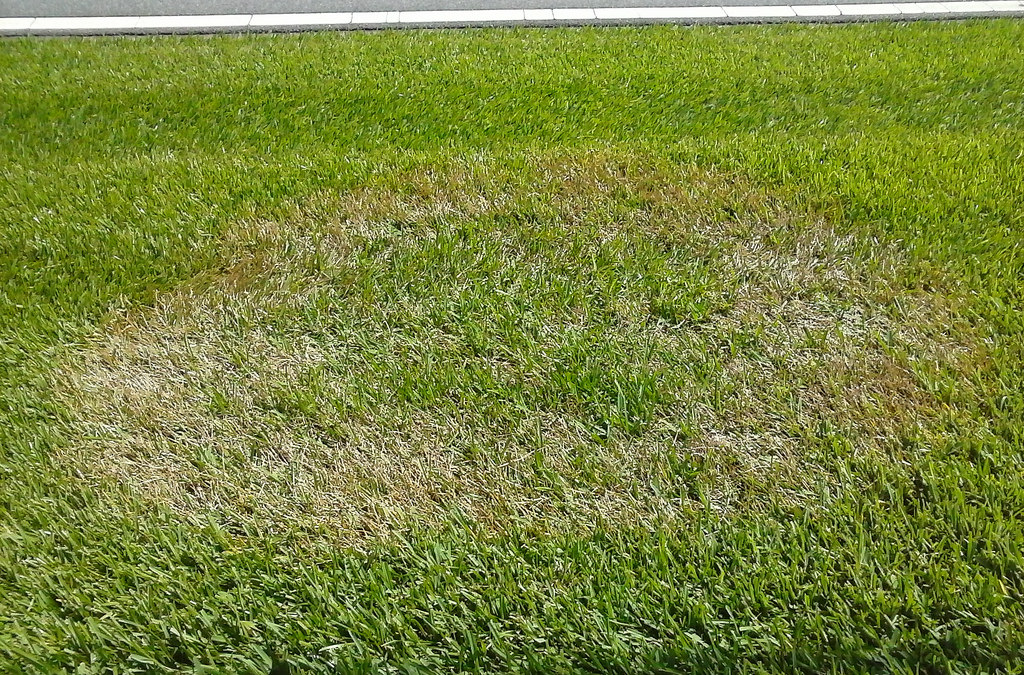
One fungus problem to watch out for in Florida, especially if your lawn is made up of St. Augustine or Zoysia grass, is Brown Patch. Brown Patch is a lawn disease that is very active in warm weather climates and, as the name suggests, this pathogen manifests as brown patches on your lawn in varying diameters. The circles will continue to grow until the disease is under control.
This lawn disease is one of the most common in Orlando and most homeowners have seen it at some point or another in their Zoysia or St. Augustine grass! Brown Patch typically starts in a small area of grass, turning grass blades yellow, then brown, then straw-colored as they die. Brown Patch usually emerges after periods of heavy rainfall or when a lawn is being generously over-watered. Your lawn is at risk, especially during winter and early spring.
Indicators of Brown Patch Fungus
Brown Patch Fungus is identified as a circular area in your lawn that is discolored. On the edge of the area, you will see browning or yellowing grass, yet the interior of the circle may be a more healthy green. Pull blades of grass at the edge of the circle, and if the blades pull away easily from the stems, look brown, and are rotted at the base of the blades, this is a sure indication that you are dealing with Brown Patch Fungus in Orlando.
How to Prevent Brown Patch Fungus Disease
One way to discourage Brown Patch Fungus is to eliminate watering your lawn in the evening. Water droplets that stay on the grass all night will spread the spores of the disease. Therefore, water in the early morning hours so that the grass will dry out during the day and before nightfall. To avoid spreading the fungus:
- Do not walk through or let pets run through the infected areas when they are wet.
- Do not mow the grass when it is wet! This will cause the rapid spread of spores.
- Call Evergreen Lawn & Pest Control for more information and assistance with your lawn care in Orlando.
Grey Leaf Spot
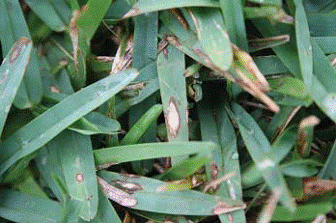
Photo: UGA.edu
Similar to brown patch fungus, grey leaf spot creates rounded patches of dying grass across your lawn. It attacks the top of each blade of grass, leaving small brown spots which may have grey “velvet” growths in the center. As the disease progresses, these spots may become oval-shaped. Grey leaf weakens your grass, leaving it sparse and is most common from early spring to early fall when humidity is high and rainfall is heavy. Spores can spread easily in the moist Orlando environment.
Fairy Ring
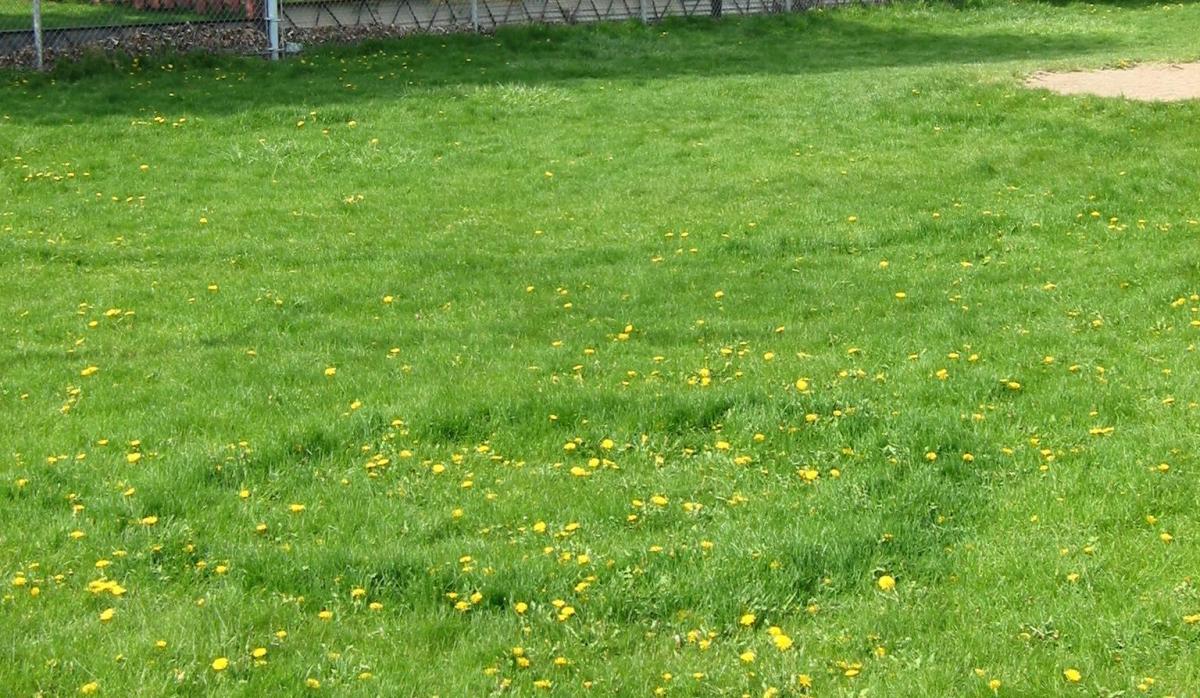
It may sound like something straight out of a fairytale, but Fairy Ring isn’t something you want to take hold of your backyard. Fairy Ring is a lawn disease common in Orlando and across Florida. They usually occur year after year, in the same spot. Rings of dark green or dead grass, occasionally with mushrooms in a circle or semi-circle. Your lawn is at the greatest risk of Fairy Ring in hot weather and months with heavy rainfall.
This disease spreads through the root system of your grass, starving it of nitrogen. It also produces mycelium, which are fine white threads that grow on your grass, harden as they die, and eventually kill the grass by preventing water from reaching the roots. In fact, the signs of Fairy Ring are usually not visible until the disease has been in your soil for two to three years. This is why many homeowners think they’ve resolved the problem, only to find it ravaging their lawns again a few years later.
Dollar Spot
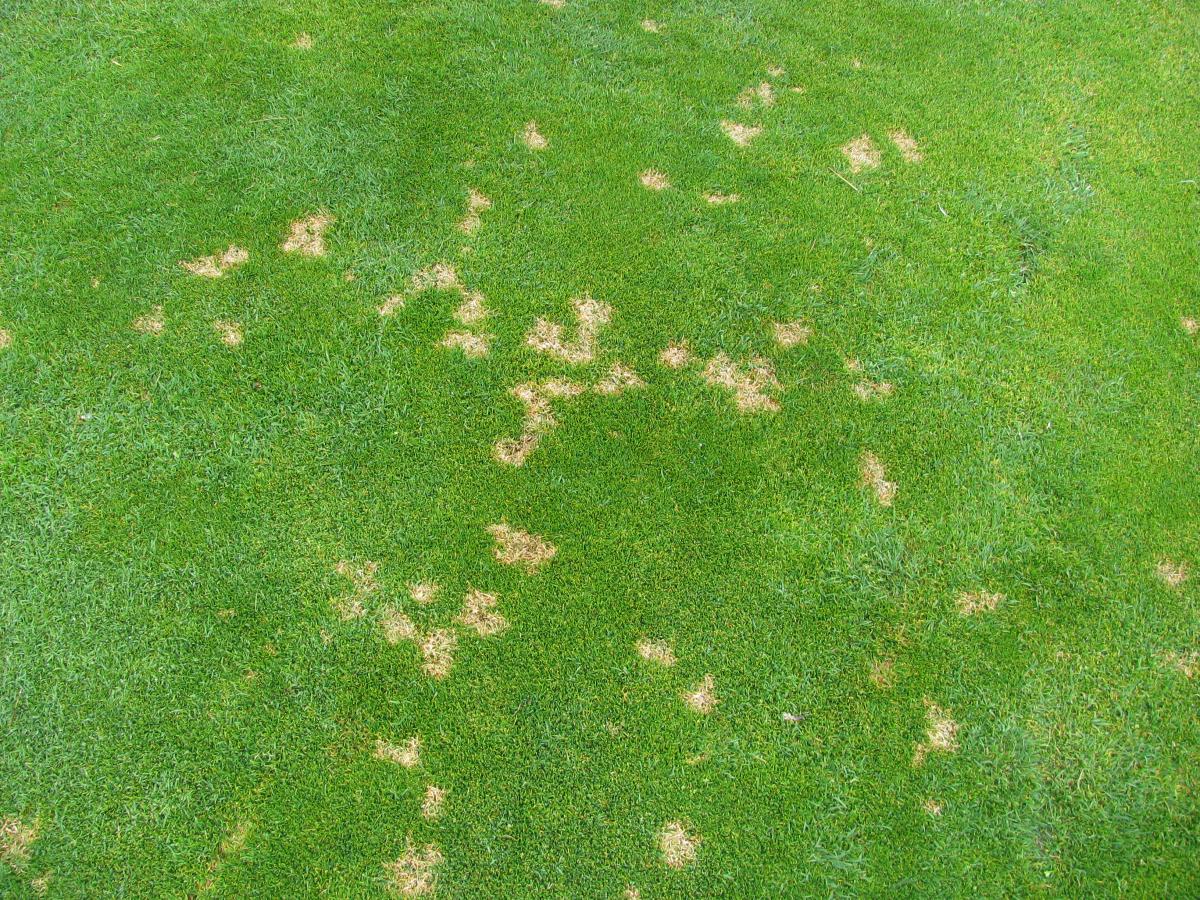
This disease gets its name from the size and shape of the spots that it leaves on lawns. This disease typically affects Kentucky Bluegrass species, and can usually be diagnosed by checking which species in grass mixes are affected by the pathogen. If you’ve ever noticed small lesions on your grass, you could be seeing the beginning of Dollar Spot. These lesions vary from tan to white and appear in circular patches – typically about the size of a silver dollar. These small patches can grow to be very large, killing grass right down the roots. Dollar Spot starts attacking lawns when humidity is high and temperatures reach above 70 degrees.
Rust Fungus
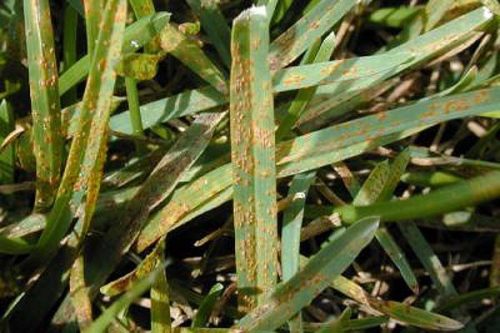
Photo: essentialhomeandgarden.com
Rust Fungus is not only unsightly, but it can make your lawn even more susceptible to other diseases as well. This fungus manifests as a yellow or orange powder, turning your lawn yellow, orange, red, or brown. Depending on the severity of the fungus in your lawn, blades of grass will turn rust-colored, growth will slow, and your lawn will become sparse. Sometimes, blades of grass will shred and droop.
Rust fungus most commonly attacks grass in shady areas that are well-saturated with rain, dew, humidity, or over-watering. It’s especially a risk in early spring to fall when temperatures are between 60 and 85 degrees.
Pythium Blight
Pythium Blight is one of the most destructive lawn diseases that attacks mature lawns and is common in athletic fields. Because of this disease’s preference for high moisture, poor drainage on your lawn can contribute to infection. The disease is particularly prevalent in hot weather with high humidity.
How to Control Common Lawn Diseases
The key to controlling many of these lawn diseases is having the proper tools to fight them. Fungicides and chemical lawn treatments are particularly effective in treating these lawn ailments. To control these lawn diseases, there are many different fungicides you can use, including:
- Azoxystrobin
- Fenareimol
- Propiconazole
- Triophanate-methyl
Use caution when applying these fungicides and other chemicals to your property – especially if you have children or pets that play in the yard. At Evergreen Lawn and Pest Control, our highly-trained lawn care technicians can apply highly effective formulas that won’t put your family at risk.
Preventative Measures to Avoid Lawn Diseases
The best thing you can do to avoid common lawn diseases is to take good care of it throughout the year. Preventative measures are always the most effective, so this includes:
- Fertilizing your lawn at least 3-4 times a year (but not over-fertilizing).
- Watering your lawn in the morning between 5 AM and 9 AM (this gives the water time to evaporate).
- Mowing your grass using a high (3-4 inch) mowing setting.
- Setting up an irrigation system– poorly drained lawns are more prone to disease.
- Increasing air flow and nutrient intake through core lawn aeration.
If you have noticed any of these symptoms or if you suspect disease in your lawn, don’t wait until it is a huge problem to address it. Here at Evergreen, we have the experience and tools necessary to get your lawn to a healthy state– and keep it that way. With our lawn care services in Orlando, we’ll take care of it all while you sit back and enjoy the rest of your summer!
